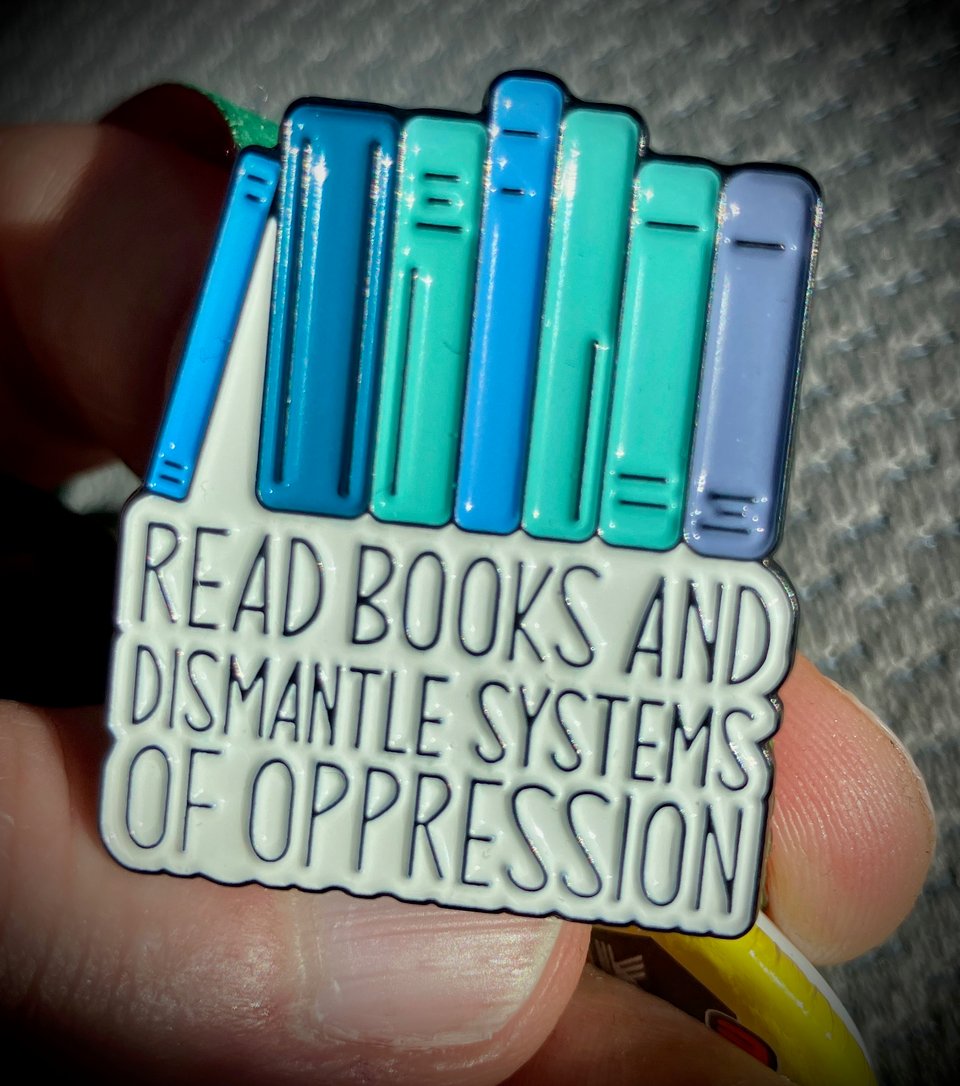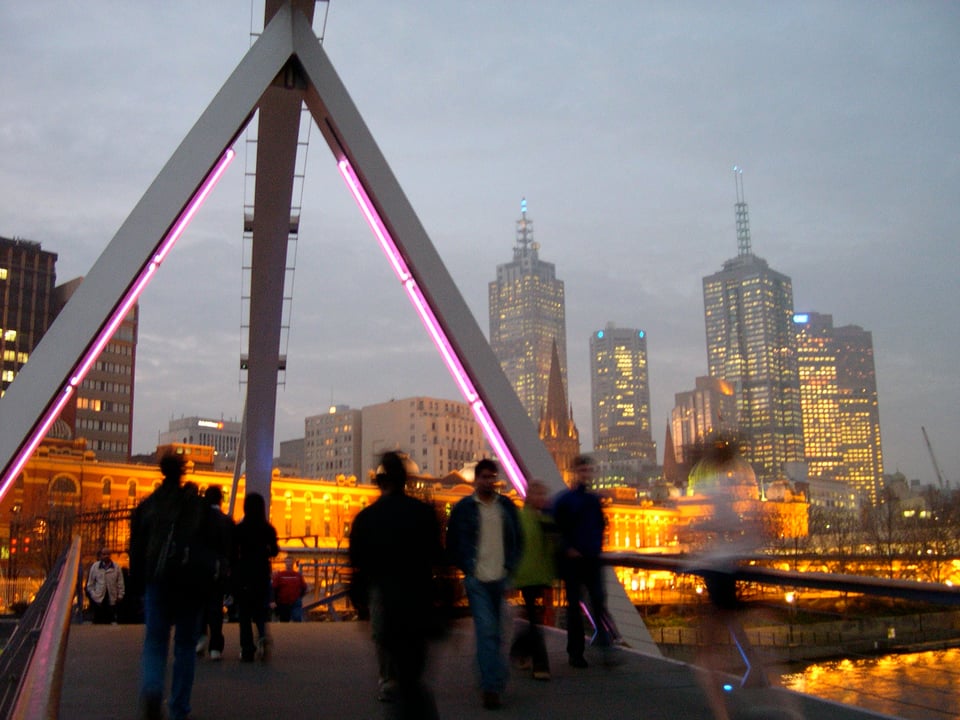Punk rock, library trends and graphic narratives
In this newsletter, libraries are punk-rock, current library sector trends, a graphic narrative symposium and various things around the internet that have piqued my interest.
Welcome to my free newsletter. Stay up to date with all my latest writings and ramblings. Wherever curiosity takes me.
I’ve often said that libraries are the last punk rock place in our capitalist society. Some people will understand immediately what I mean but it may need some explanation for others.
Briefly, what I mean by that is that in a society where the market rules, where everything is paid, or if it’s free you pay by giving away all your privacy and rights, libraries are a stunningly beautiful anomaly. Where else can you get so much for free? Where else can you go to get so much help from a fellow human for free? And libraries are very good at responding to the community in a very punk DIY manner with increasingly tighter budgets.
Talking about that, I have to thank one of my colleagues who gave me this pin just this week. She said she saw it and immediately thought I had to wear it . I love it!

This week I had the opportunity to attend a full day training event organised by three neighbouring library services coming together - one of them being my employer.
It was an excellent idea to bring us all together to hear from keynote speakers and to hear from our neighbouring library services, to see what they’re doing, what overlaps or similarities there are between our services and, also, what differences.
We started the day with ALIA CEO Cathie Warburton and PLV CEO Angela Savage. They both went through some of the bigger picture trends in our sector and provided some serious food for thought.
Personally, due to my background and interests I was most interested in:
The creation of the Australian Media Literacy Alliance (AMLA) and their work.
The mention of resources from a university and the ABC (if I remember correctly - this is something I need to follow up) for media literacy workshops for libraries.
The ongoing issue of book challenges, bans, harassment of librarians and freedom to read.
The issues and concerns around AI and how that affects our environment, sustainability goals, and, of course, information and media literacy.
These are all issues that I was aware of, that I’ve been following and have been simmering in my head. It was great to see them highlighted by both Cathie and Angela. There’s a lot of work to do in this area.
It was also great to meet librarians from our neighbouring services and hear from them about what they’re doing. Personally, I was glad I was able to have a chat with the librarians from Dandenong responsible for Dandy Con and for their excellent graphic novels collection. Kudos to them, they’re doing an awesome job.
The other event I attended was the Graphic Narrative Symposium at Melbourne University. This free event was not designed for librarians. It was a very academic presentation for fellow academics, researchers and comic book creators. But there were at least two librarians there, infiltrating the event and we were both totally engrossed all day.
The study of comics in academia and the use of comics in academic courses has been evolving and, I’d say, it’s becoming more widespread.
The academic presentations in the morning were fascinating. In the first presentation Penny Russon discussed a graphic adaptation of Shirley Jackson’s The Lottery and how adaptations into graphic narratives work. Then Mridula Nath Chakraborty presented on Bhimayana, explained the cultural context of the text, how the text differs visually to western comics and how she intends to use it in her course.
Marina Buzzetti’s exploration of three non-fiction comics telling stories of Chinese migrants in Italy and the approach taken by the authors in what they described as graphic essays was, perhaps my particular highlight of the morning.
Buzzetti discussed the three graphic essays through the lens of postmemory a term that I wasn’t familiar with and Marianne Hirsch described as:
the relationship of the second generation to powerful, often traumatic, experiences that preceded their birth but that were nevertheless transmitted to them so deeply as to seem to constitute memories in their own right
I can’t go into detail on everything but being a huge reader of graphic non-fiction and living in the other side of the world to where I was born, grew up and all my family is, I found Buzzetti’s exploration of postmemory through migrant and diaspora voices incredibly powerful and interesting. Intergenerational transmission of culture, language and memories are constantly reshaped. These second hand memories are personal but the role of postmemory in documentation and historical accuracy when putting it into images and words, is also essential.
I often think about my own memories and cultural connection/identity as the years pass. I have now lived longer in Australia than in the Basque Country but I see myself as predominantly Basque. It was my first language, it was where I grew up, and it’s where I feel the connection to land and people the most.
My son is 14 now and he’s bilingual, speaking Basque and English. I know he has a strong connection with the Basque Country even though he was born here and has lived all his life in Australia but how will his connection to land and people evolve? How will my connection and memories evolve through him? These are great questions.
My brain was electric after Buzzetti finished her presentation but I didn’t have any time to breathe. Stewart King’s exploration of the European literary tradition through the graphic novel adaptations of Lluis Juste de Nin and how they worked within the context of Juste de Nin’s Catalan identity and politics also struck a nerve. While I haven’t read any of Juste de Nin’s graphic novels (something I may have to remedy), I was familiar with them and I was more familiar with his political cartoons. Of course, the similarities between the Catalan and Basque history and struggle to increase the use of our languages and to develop culture and art in both Basque and Catalan, made this a really interesting presentation.
The morning session closed with a roundtable of academics on teaching comics in Melbourne University, Monash University and RMIT. The courses vary from creative writing courses that explicitly teach comics and graphic narratives as part of their course, to German and French studies that include comics in their units of work. We definitely need more of this!
In the afternoon it was the turn of the comic book creators to present. Rachel Ang and Bernard Caleo did live readings of their comics. Bruce Mutard, Kim Lam, Emma Do and Clement Baloup spoke about their comics and their working methodology. The symposium concluded with a workshop by Clement Baloup that got everyone in the room thinking about food, the memories it can trigger, the obsession with certain foods we may have, or our relationship with food and then we all drew a page of a comic. We were given about 15 minutes to draw and all I could think about was the food from the Basque Country that I miss when I’m in Australia and how every time I visit my hometown I feast on all the delicacies I can’t get here. Inevitably, I always come back with some extra weight on my body.
Thank you to Melbourne University and Monash University for organising this event and for making it free to attend. It was a very interesting and insightful day and it has given me a lot to think and reflect on.
KICKING AROUND THE NET
Pop culture historian Daniel Best has published an article outlining some of the censorship comics suffered in Australia in the 1950s and the Horwitz Code of Publishing Ethics, which predated the more famous American Comics Code. Excellent piece and really interesting to read the Horwitz Code in full.
The Australian Society of Authors was recently involved in the Senate Inquiry looking at the Productivity Commision’s proposal to make an exception so tech companies can steal copyrighted materials and use them to train their AI models. The whole article is worth reading but as Professor Toby Walsh says: ‘It is not technically necessary for them to do this. It is only the commercial race that has encouraged them to skirt the law.’ Funny how a few years ago houses were raided and teenagers downloading music arrested but now tech companies can steal everything and governments all over the world are quickly try to pass laws to make it legal.
The authors of the Graphic Medicine Manifesto have celebrated 10 years of the publication of the original manifesto with a chat on YouTube discussing the impact of the book, the evolution of the field since its publication and the future vision for graphic medicine. You can watch the full chat below.
Pen America has published a report on book bans in the U.S. entitled The Normalization of Book Banning, which is well worth a read. As the report shows book challenges and bans have become routine.
Cory Doctorow’s new book on enshittification is out soon and he’s already doing a book tour. He recently published a recording of the event at the Brooklyn Public Library and, while we wait for the book, it’s an excellent listen.
The System Crash podcast by Brian Merchan had a really interesting episode back in April where Brian, Annalee Newitz and Charlie Jane Anders discussed science fiction texts in the context of current U.S. authoritarianism, sociopolitical struggles and tech corporations. They discuss the deluded, increasingly dystopian future tech bros are pushing for, where they find hope and how science fiction books can help us. You can listen to the episode on YouTube, or wherever you listen to podcasts.
PHOTO OF THE DAY

I took this photo quite a while back and, imperfect as it is, I’ve always liked it. There’s something eerie and magical about it. The bridge leading towards the welcoming warm lights in the buildings and city in the background and the grey, murky sky above. The black silhouettes of people and that ghostly, blurred figure on the right hand side. Perhaps, this photo in its imperfect execution conveys my mixed feelings when it comes to big cities and busy city centres?
